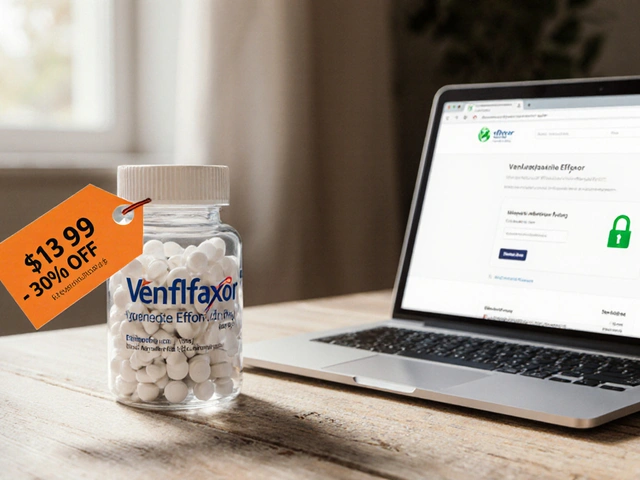Loperamide: What It Is, How to Use It Safely
If you’ve ever had an upset stomach that won’t quit, you probably reached for an anti‑diarrheal. Loperamide is the most common ingredient in over‑the‑counter products like Imodium. It’s designed to slow down gut movement so you can hold onto your food and fluids a bit longer.
Unlike some prescription meds that act on the brain, loperamide stays in the gut. It binds to opioid receptors in the intestines, reducing the speed of contractions. The result? Fewer, firmer stools and less urgency.
When and How to Take Loperamide
Use loperamide only for sudden, non‑bloody diarrhea that isn’t caused by a bacterial infection. If you have a fever, vomiting, or blood in your stool, skip it and see a doctor. For adults, the usual starter dose is 2 mg (one tablet) after the first loose stool, then 2 mg after each subsequent loose stool, not exceeding 8 mg in 24 hours.
Kids under 12 need special dosing based on weight – typically 0.08 mg per kilogram per day, split into 2‑to‑4 doses. Never give a child an adult dose; the risk of severe constipation or even toxic megacolon goes up fast.
Take the tablet with a full glass of water. You can take it with food or without – it doesn’t matter much. If you miss a dose, just resume your regular schedule; don’t double up.
Side Effects, Interactions & Red Flags
Most people feel fine, but some experience dry mouth, dizziness, or mild abdominal cramping. Those symptoms usually fade once your gut settles down. Rarely, high doses can cause a serious heart rhythm problem called QT prolongation, especially if you’re also on certain antibiotics or antidepressants.
Watch out for drug interactions. Antifungals (like ketoconazole), some HIV meds, and certain heart drugs can raise loperamide levels in the blood, increasing the risk of side effects. Always check the label or ask a pharmacist if you’re on other prescription meds.
Call a healthcare professional if you notice any of these: no bowel movement for more than three days, severe abdominal pain, swelling, or vomiting. Those could signal a blockage and need immediate attention.
Pregnant or breastfeeding moms should talk to a doctor before reaching for loperamide. While short‑term use is generally considered safe, it’s better to get a professional’s go‑ahead.
In short, loperamide is a handy tool for short‑term diarrhea relief when used correctly. Stick to the recommended dose, watch for side effects, and don’t ignore warning signs. When in doubt, a quick call to your pharmacist or doctor can save you from unnecessary trouble.
Imodium Guide: How to Use Loperamide Safely for Diarrhea
Learn what Imodium is, how it works, proper dosing, side effects, and buying tips. A clear, practical guide for anyone dealing with sudden diarrhea.
About
Medications
Latest Posts


Hypoparathyroidism: How to Manage Low Calcium and Vitamin D Effectively
By Orion Kingsworth Dec 5, 2025

Buy Cheap Generic Effexor Online - Safe Guide & Top Pharmacy Picks
By Orion Kingsworth Oct 5, 2025

How to Safely Buy Cheap Generic Zoloft Online in 2025
By Orion Kingsworth Oct 12, 2025

